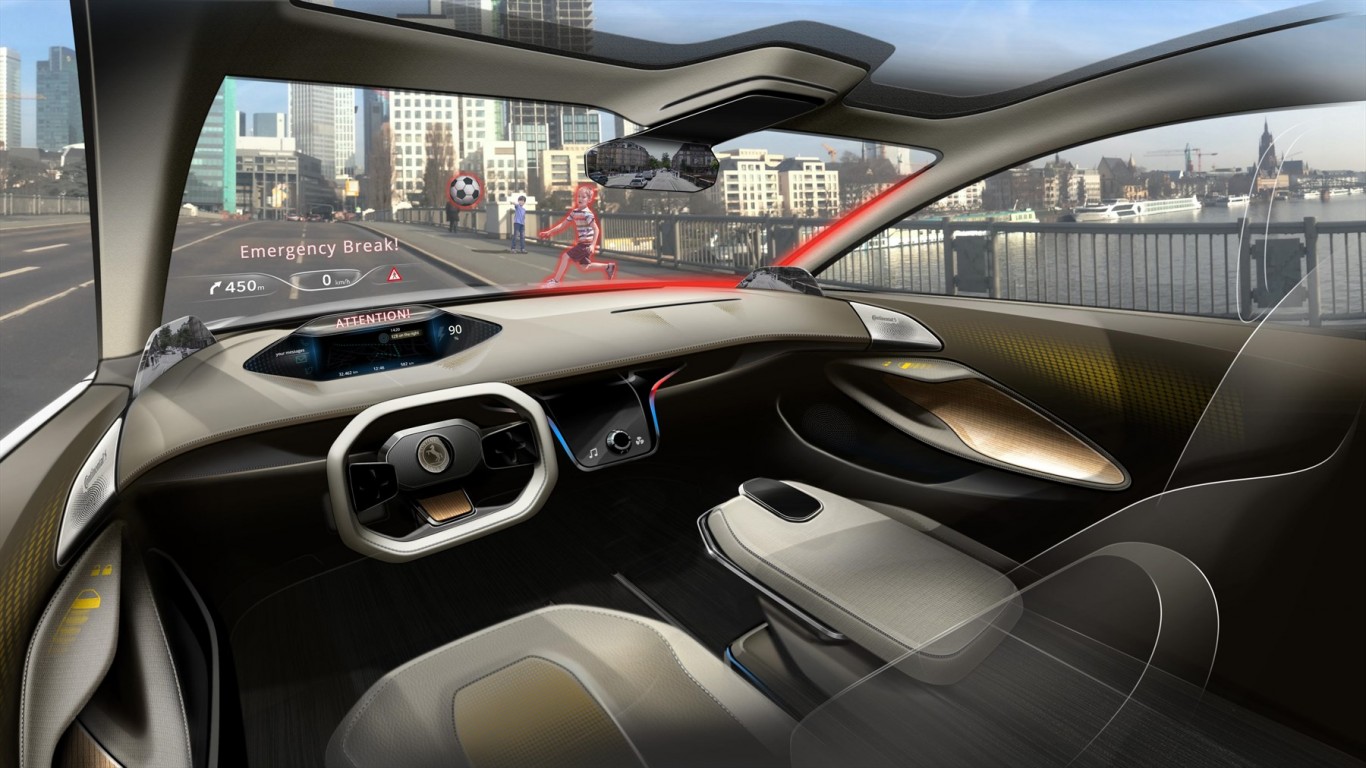- Continental showcases its vision of the cockpit of the future
- Changing interfaces and windshield displays: worldwide workshops for visionary ideas
- Integrated Interior Platform from Continental can make the vision a reality
PORT ELIZABETH, South Africa, 2 October 2017 – Digital mobility strategies, a rising tide of information and the increasingly interconnected and mobile lives of drivers – these all lead to new requirements for the way information is conveyed inside vehicles. It’s an area in which conventional display and operating systems are rapidly reaching their limits.
Entirely new cockpit designs are also needed for automated driving to succeed if drivers wish to be relaxed and entertained in equal measure in their new environments. Knowledge of this automotive future is essential for keeping up with the times in delivering developments.
With these requirements in mind, Continental used the 2017 IAA in Frankfurt to showcase its vision of the cockpit of the future.
“Numerous innovations in vehicle interiors await us on the path to the automated and fully interconnected future of mobility. Interfaces that can change and seamlessly take on new forms; digital mirrors and large-scale augmentation of the vehicle environment will all be available to drivers in the future,” commented Dr Frank Rabe, head of Continental’s Instrumentation & Driver HMI business unit.
“In our Cockpit Vision 2025, we are presenting designs that will revolutionize vehicle interiors before very long,” he added.
Mixed-reality model fuses the present and the future
Using a mixed-reality model, an unremarkable clay shape without any instruments transforms into the cockpit of the future thanks to the use of an augmented-reality headset. In addition to the controls and entertainment elements that this reveals, the vision includes brief, animated scenarios illustrating the innovative solutions.
“As soon as users are immersed in our vision, they find out that the cockpit of the future will adapt smoothly and dynamically to the specific driving situation,” explained Rabe.
“During automated driving, for example, certain controls and displays will remain hidden. They will only become visible and accessible when requested, thanks to the changing, intelligent interfaces. “This creates a completely flexible, all-encompassing cockpit.”
For Continental, the Cockpit Vision includes a wide array of functions for comprehensive human-machine interaction that can dynamically and flexibly adapt the vehicle interior to the specific situation.
For example, in its mixed-reality demonstrator, the company shows a retractable steering wheel, as well as expanded functions on its screens and augmented-reality head-up displays. Mirror displays replace the traditional exterior mirrors and extend only when required,.
With smart control, a special input device is provided for automated driving that clearly and intuitively assists drivers in the transition to the role of users. The device provides information as to whether the vehicle will drive itself or can be driven on the current stretch of road and is used to control vehicle manoeuvres.
Additional highlights include morphing interfaces that can reveal or hide displays as required, for example, or a windshield that can be used as a monitor to show information about certain places in the area or to play films.
Control centre for the cockpit of tomorrow has already been developed
To make the vision a reality, Continental has already developed the necessary hardware, which controls all the vehicle’s input and output devices, plus mobile devices with a single electronic control unit (ECU).
The Integrated Interior Platform (IIP) is an important step toward a comprehensive human-machine interface and links the vehicle cockpit, which acts as a central computer in itself, with the driver and his or her mobile devices, other road users, infrastructure and the cloud.
The vehicle is therefore a digital companion and is completely interconnected at all times. The IIP thereby manages to securely and stably operate safety-relevant functions such as instrumentation, as well as cloud-based or infotainment functions, using a single piece of hardware.
By merging hitherto separate domains in the cockpit of the future, not only is Continental laying the groundwork for a fully updatable interior, but the driver can use functions flexibly across all applications, even if these were previously restricted to the instrument cluster or the displays on the centre console.
Information that can be positioned anywhere, and the option to move content dynamically, means that there is now nothing standing in the way of personalized cockpits.
Strategic approach
To develop Cockpit Vision 2025, Continental took an approach of strategic foresight, looking at the development of trends and the future. This involved initially identifying seven automotive scenarios for the year 2030 that differed in terms of attitudes to vehicle ownership, environmental awareness and price-consciousness within a society, for example.
The next step was for the researchers to determine which scenario was most applicable to each market and to hold workshops in six countries over three continents to generate the most diverse visions possible for the various scenarios.
Panels of experts compared the content obtained by these processes with current trends and forecasts by visionary insiders in the industry and added such contributions as trend and technology analyses, country profiles and information on applicable legislation.
“This produced fascinating ideas for new products, services and design elements, all focused on one thing: the driver’s user experience. We are going to be showcasing the promising visions with our Cockpit Vision 2025 study and will now be gradually putting them into practice for real,” Rabe concluded.
See what’s driving the future: Continental Cockpit Vision https://t.co/5nN6CIN1EN @continentaltire #ArriveAlive pic.twitter.com/VxNcWnDGD1
— Arrive Alive (@_ArriveAlive) October 4, 2017
